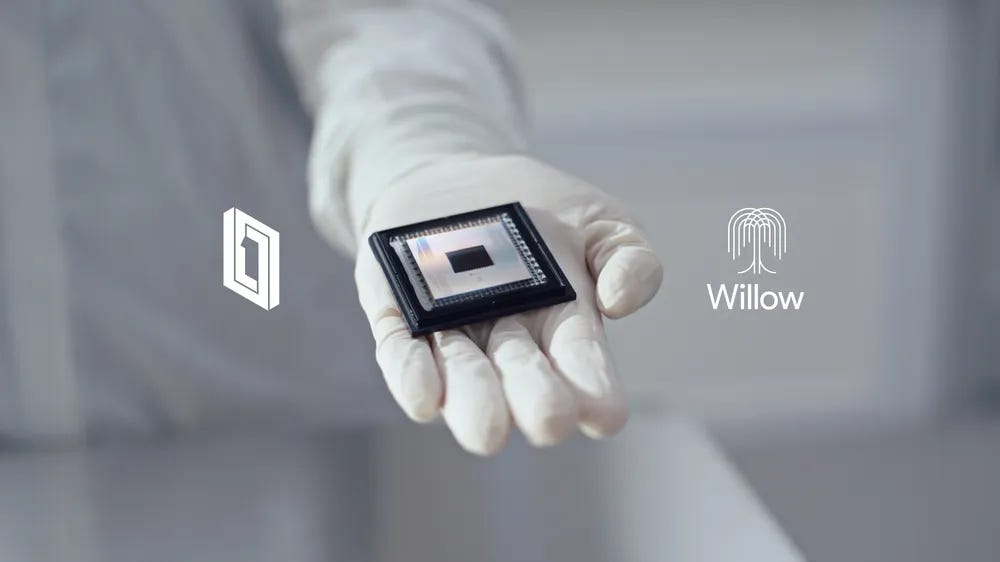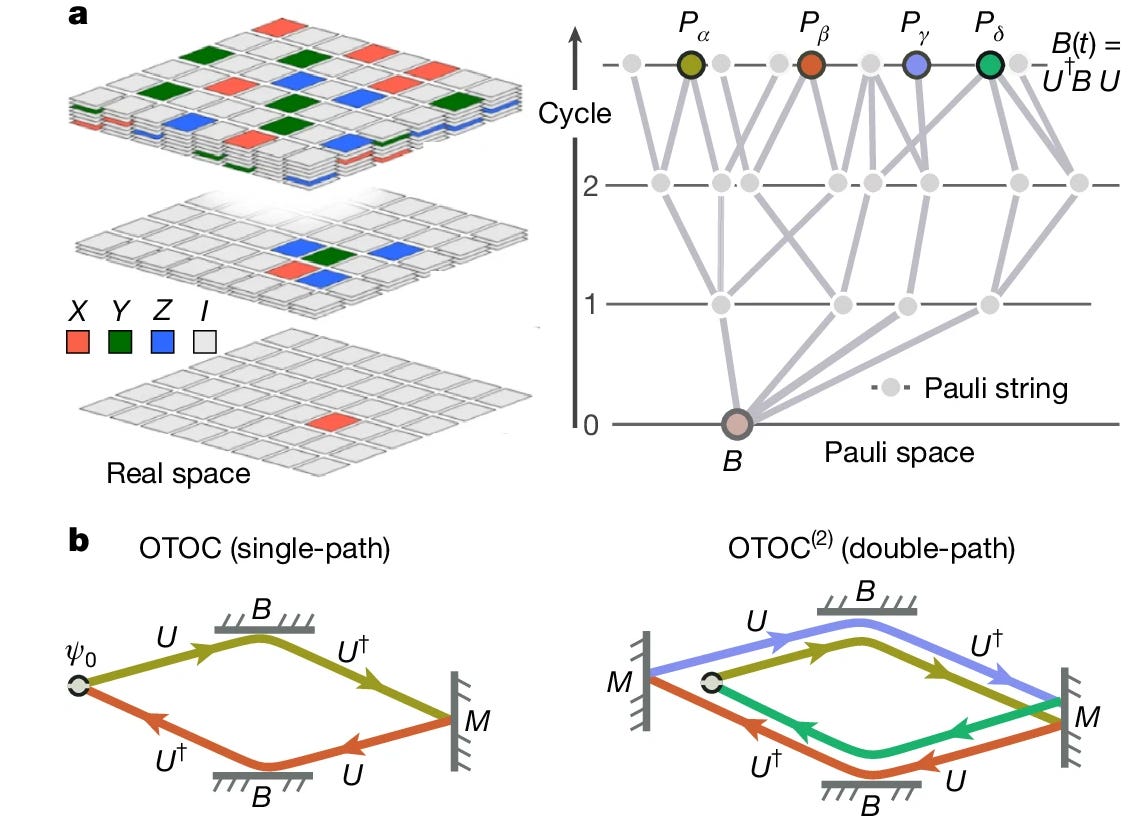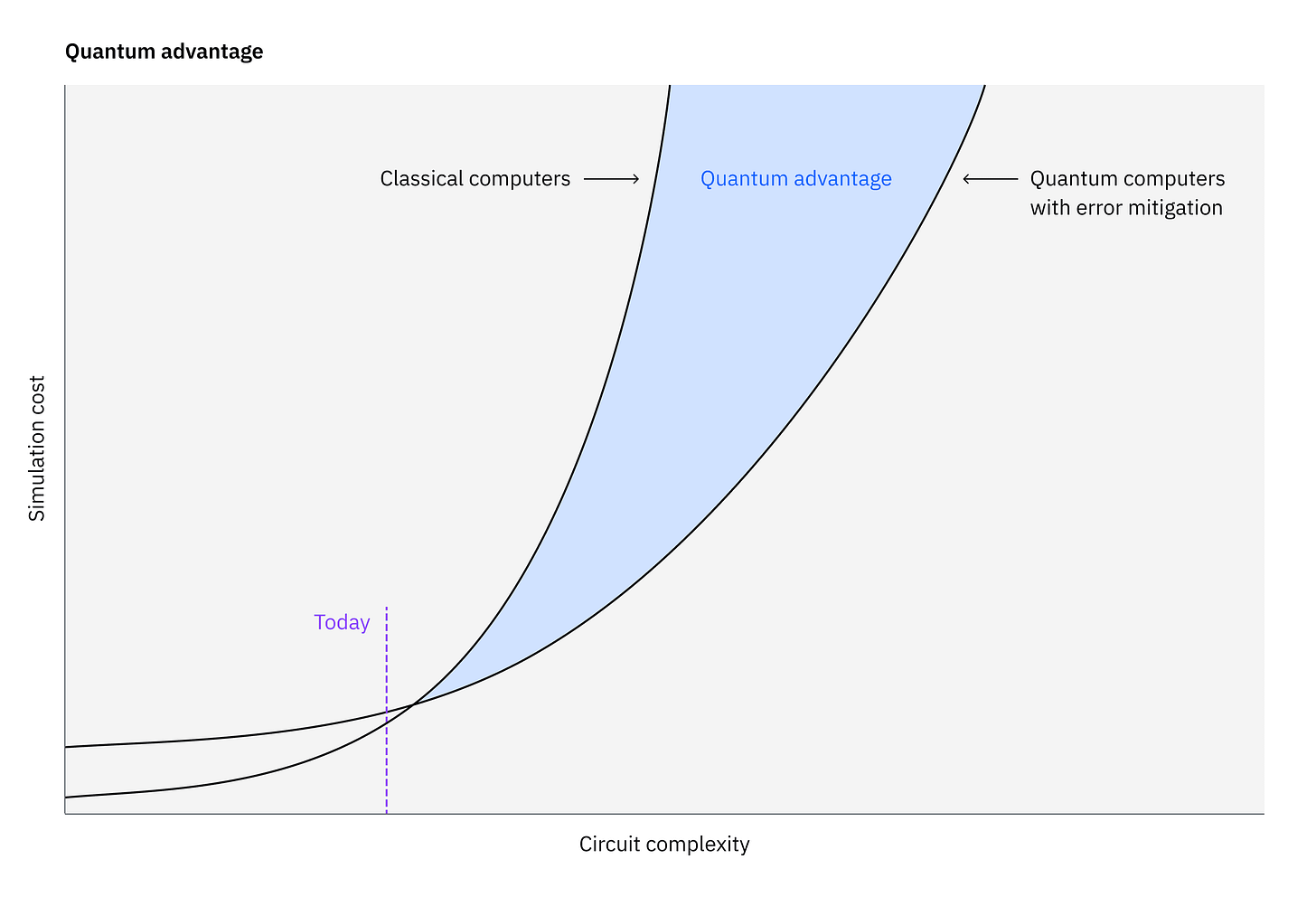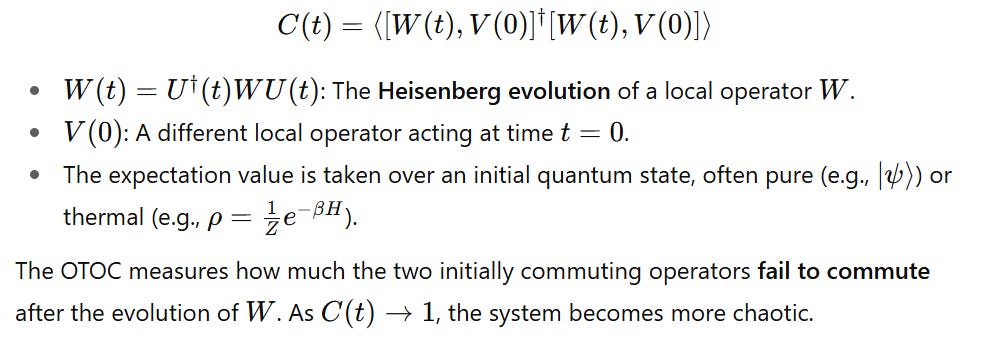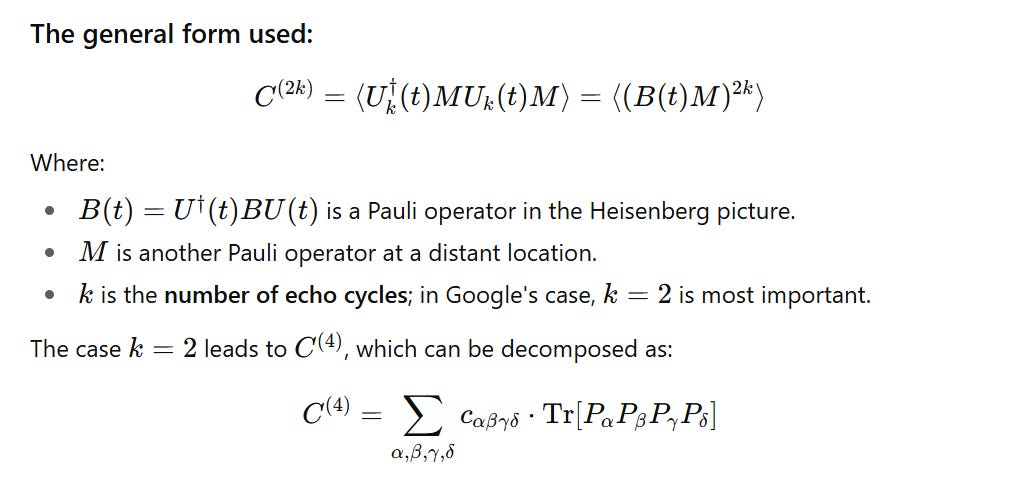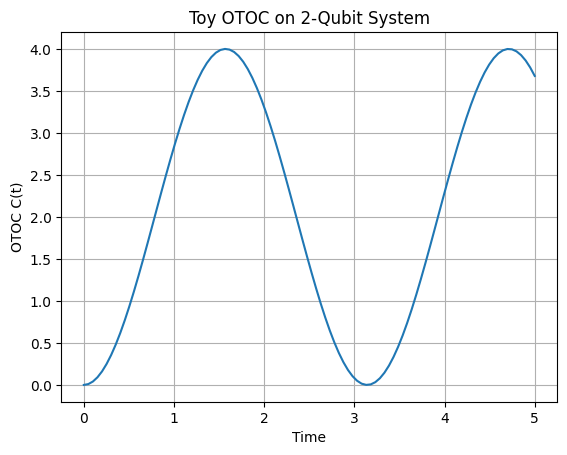Quantum Echoes: The Algorithm That Echoes the Future
How Google's Willow chip and the OTOC(2) protocol might have just cracked open the era of practical quantum computing.
I. The Silent Revolution Has Begun
A century after the first transistor, our world again stands on the brink of a technological metamorphosis—not with silicon, but with superposition and entanglement. In my previous piece, Majorana-1: The New Transistor, I explored how topological states like Majorana fermions could rewrite the hardware layer of computation.
Now, with Quantum Echoes, we shift focus from hardware to algorithm, and we witness the software heart of the quantum revolution beat audibly for the first time.
II. Quantum Echoes: What Google Just Did
On October 22, 2025, Google Quantum AI announced something quietly seismic: the successful execution of a verifiable quantum algorithm on a 105-qubit superconducting chip named Willow
The algorithm, poetically dubbed Quantum Echoes, is not a toy problem, nor an unrepeatable benchmark. It achieves what no quantum algorithm before it has:
Verifiable quantum advantage on a physically relevant task
Scientific utility in modeling complex quantum systems
Intractability for classical supercomputers (even the titanic Frontier)
This is not just about beating classical computers—it’s about doing something fundamentally new.
III. The Algorithm: A Quantum Interferometer of Time
At the core of Quantum Echoes lies a concept known as the Out-of-Time-Order Correlator (OTOC). It’s the quantum analog of the butterfly effect—a metric of how a tiny perturbation spreads across an entangled
Unlike classical chaos, which amplifies deviations through exponential sensitivity to initial conditions, quantum chaos is shrouded in entanglement and unitary reversibility. Here’s how the Quantum Echoes algorithm works:
Initialization: The system is prepared in a specific quantum state.
Forward Evolution: Quantum gates are applied, scrambling the system.
Perturbation: A small, localized change is introduced.
Time Reversal: The system is evolved backward.
Measurement: The OTOC is measured, revealing how the disturbance propagated.
This echo is more than a metaphor—it’s a constructive interference pattern that reveals deep, hidden correlations in many-body quantum systems.
IV. Why This Matters: From Benchmarks to Biology
Quantum supremacy demonstrations in 2019 were often criticized as computational fireworks—impressive, yes, but practically useless.
Quantum Echoes changes that.
In one experiment, it was used to simulate molecular geometry, performing a kind of quantum-enhanced NMR spectroscopy that traditional techniques could not achieve
The algorithm measured long-range spin interactions, modeling molecules of up to 28 atoms with greater detail than classical NMR methods.
Crucially, the results were verifiable and repeatable across quantum processors—a milestone in trust and reproducibility
V. Constructive Interference and the Edge of Chaos
What gives Quantum Echoes its true power is something physically beautiful: constructive interference of large loops in Pauli space.
Google’s experiments show that the OTOC(2)—a higher-order correlator involving time-reversed quantum trajectories—is exponentially harder to simulate classic
Constructive interference at the edge of quantum ergodic dynamics
This is not merely quantum complexity; it’s useful quantum complexity.
In some circuits, computing a single OTOC(2) measurement on classical hardware would take 3.2 years, while Willow did it in 2.1 hours
In physics terms: the experiment moves quantum computing into the Goldilocks Zone of quantum advantage—where problems are:
Too complex for classical algorithms
But still measurable with quantum systems
And relevant to real-world science (e.g., chemistry, biology)
VI. Toward Quantum Utility: Learning Hamiltonians
One of the most exciting use cases shown was Hamiltonian learning.
By comparing experimental OTOC(2) data with simulated values from a parameterized Hamiltonian, researchers could learn unknown properties of the quantum system itself—a kind of quantum self-awareness
This is more than theoretical elegance. In the future, such techniques could be used to:
Discover new materials
Optimize quantum sensors
Improve drug discovery by mapping molecular binding geometries
VII. Quantum Echoes and the New Computing Paradigm
What the transistor was to classical electronics, OTOC(2) might be to quantum algorithms: a foundational unit.
This isn’t a finished revolution. The algorithm still needs ultra-low noise hardware (like Willow), and error correction remains a looming challenge. But for the first time, an algorithm exists that is:
Scientifically useful
Quantum-mechanically verified
Beyond classical reach
VIII. Final Thoughts: A Quantum Transistor of Thought
Majorana modes may give us stable qubits.
Quantum Echoes gives us reason to use them.
The Quantum Echoes experiment is a pivot point, not just for quantum supremacy but for quantum utility. It brings us closer to computing systems that do not merely simulate nature—they listen to it, amplify its echoes, and return answers we could never reach alone.
We’ve heard the first clear echo.
The rest of the signal is coming.
Appendix
✨ Quantum Echoes: The Mathematics of Entanglement Echoes
A companion post to may previous “Majorana-1: The New Transistor” — exploring the math and meaning behind Google’s Quantum Echoes algorithm and why OTOCs may become the signal processors of the quantum age.
🔹 I. What’s an OTOC and Why Should We Care?
In quantum mechanics, observables don’t just evolve—they scramble. The Out-of-Time-Order Correlator (OTOC) is a measure of how chaotic, or how irreversibly scrambled, a quantum system becomes.
Mathematically:
🔹 II. Echoes in Pauli Space: What Is OTOC(2)?
Google’s Quantum Echoes breakthrough used a higher-order version of the OTOC called OTOC(2) or ( C^{(4)} ). Why?
Because it captures constructive interference among large Pauli strings. These are correlations invisible to classical simulation.
These correlators form loops in Pauli space. When the product of four evolved Pauli strings equals the identity, interference patterns amplify—revealing hidden entanglement.
🔹 III. Simulating a Toy OTOC (with QuTiP)
Let’s simulate a simple 2-qubit system to get a feel for OTOCs.
👉 Python Code:
from qutip import *
import numpy as np
import matplotlib.pyplot as plt
# Basic operators
sx = sigmax()
sy = sigmay()
sz = sigmaz()
si = qeye(2)
# Two-qubit space
X1 = tensor(sx, si)
Z2 = tensor(si, sz)
# Heisenberg-like Hamiltonian
H = 0.5 * (tensor(sx, sx) + tensor(sy, sy) + tensor(sz, sz))
# Initial state (ground state of two qubits)
initial_state = tensor(basis(2, 0), basis(2, 0))
# Time evolution
times = np.linspace(0, 5, 100)
otoc_vals = []
# Compute OTOC: C(t) = < [W(t), V]^† [W(t), V] >
for t in times:
U = (-1j * H * t).expm()
W_t = U.dag() * X1 * U
comm = W_t * Z2 - Z2 * W_t
otoc_val = expect(comm.dag() * comm, initial_state)
otoc_vals.append(otoc_val.real)
# Plot
plt.plot(times, otoc_vals)
plt.xlabel(’Time’)
plt.ylabel(’OTOC C(t)’)
plt.title(’Toy OTOC on 2-Qubit System’)
plt.grid()
plt.show()
This gives us a clean visualization of how OTOCs evolve in a small, simulated system.
🔹 IV. From Toy Models to Quantum Advantage
In contrast to this toy model, Google’s Quantum Echoes algorithm ran on a 105-qubit superconducting chip (“Willow”), measuring OTOC(2) over massive, chaotic circuits.
What they showed:
A verifiable quantum advantage—repeatable on multiple systems
Performance up to 13,000× faster than the best classical supercomputer
Application to molecular geometry reconstruction, beyond what standard NMR can do
These OTOCs are so sensitive and rich in interference patterns that classical algorithms can’t simulate them anymore.
🔹 V. Final Thoughts: OTOCs as the New Logic Primitives?
If the transistor defined classical logic gates, OTOC(2) may define a quantum analog:
It can sense entanglement that spreads over many-body systems.
It carries signals amplified by constructive quantum interference.
It offers a verifiable, real-world utility, not just theoretical supremacy.
From chaos to chemistry, from black holes to biology — the quantum echo might become our clearest signal into the unknown.



